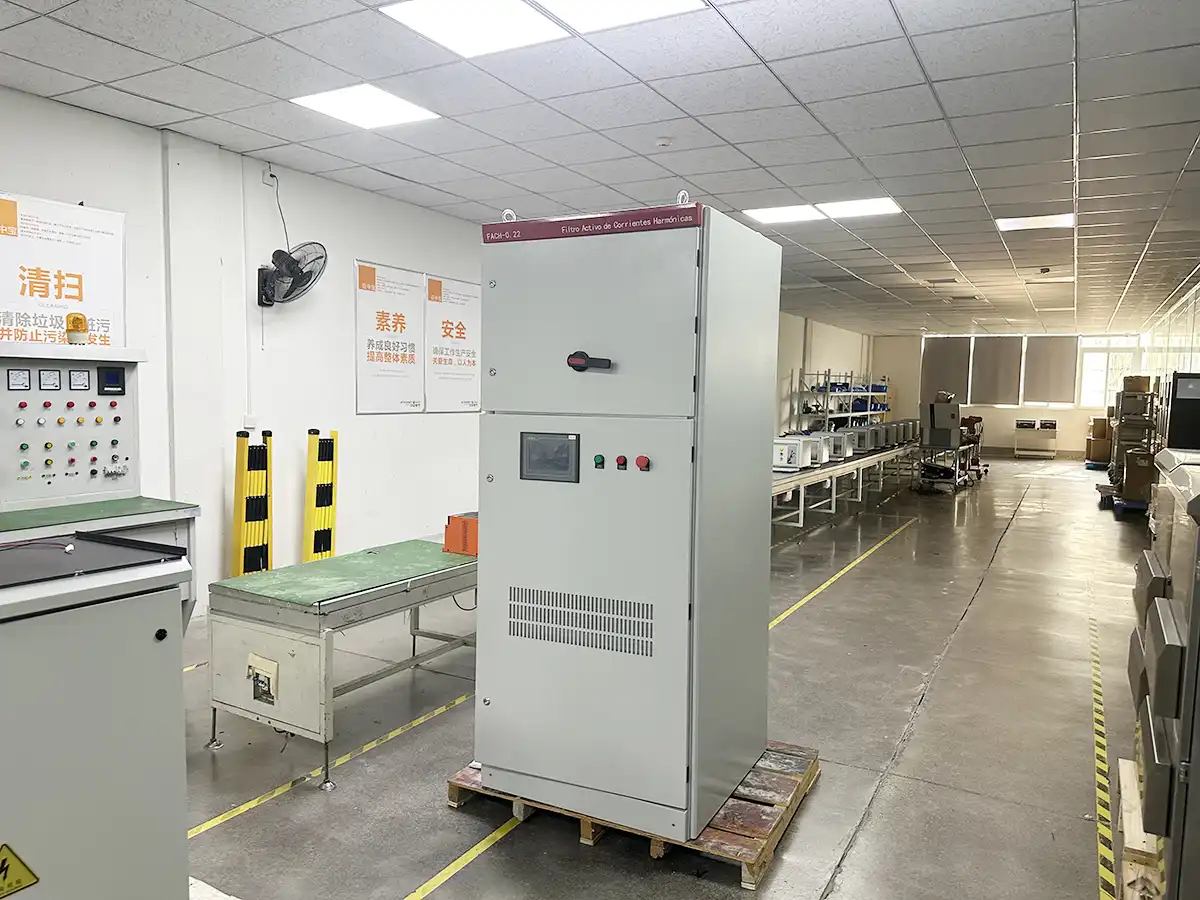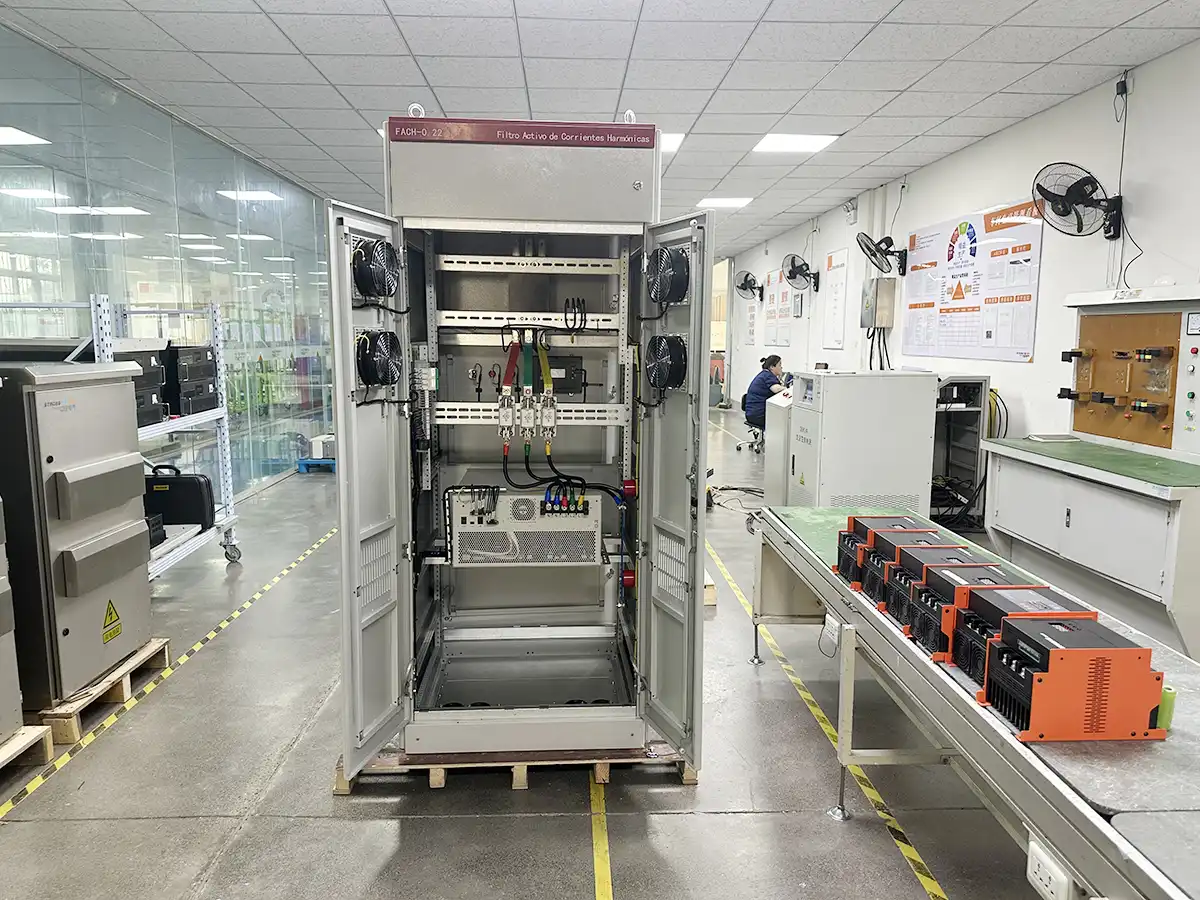Active harmonic filters play a vital role in maintaining the stability of electrical power systems. In contemporary coal-fired power stations, variable frequency drive (VFD) speed regulators—commonly employed in auxiliary systems such as large fans and pumps—generate significant characteristic harmonics, including the 5th and 7th order harmonics, during the rectification stage. Additionally, non-linear loads like uninterruptible power supplies (UPSs), DC charging systems, and energy-efficient lighting that support the control infrastructure also contribute harmonic distortion to the grid. If these harmonics are not adequately mitigated, they may compromise the safe operation of the plant, potentially resulting in relay protection malfunctions, erroneous operation of sensitive control equipment, overheating of transformers and cables, and accelerated insulation deterioration.

Hence, the effective suppression of harmonics and the enhancement of power quality have become pressing issues that demand resolution. The objective is to minimise the likelihood of protection device failure and spurious fuse operation, thereby prolonging the service life of essential assets such as transformers, switchgear, and motors.
How can high-frequency harmonics in power generation plants be mitigated?
The operation of variable frequency equipment generates substantial harmonics during production. To tackle these issues, Strong Power engineers performed an on-site assessment and found that the existing capacitor compensation cabinet was not operating correctly and failed to meet the client’s needs. We implemented an upgrade by installing a 400A active power filter cabinet for harmonic suppression. This system continuously monitors the harmonic components in the load current and instantly injects a compensating current of the same magnitude but opposite phase, effectively neutralizing the harmonics. Following the installation of the 400A AZBAPF active power filter, the total harmonic distortion (THDi) was reduced to 1.2%, and the power factor approached 1. The compensation proved highly effective, fully resolving the site’s reactive power and harmonic problems.

Key Benefits of Active Harmonic Filters for Power Plants
Active harmonic filters are essential for modern combustion power plants, offering critical improvements in reliability and efficiency. Their primary benefits include:
Maximized Uptime: Prevents unplanned outages by eliminating harmonic interference.
Reduced Operating Costs: Cuts energy consumption and prevents heat-related wear on equipment.
Guaranteed Compliance: Ensures the power supplied to the grid meets all quality standards.
Enhanced Grid Security: Actively avoids the system resonance risks associated with passive filters.
Optimizing Power Plant Performance: Active vs. Passive Harmonic Filters
| Characteristics | Active Power Filter (APF) | Passive Filter (PF) |
| Filtering Principle | Actively injects opposite compensation currents | Uses LC circuit resonance to provide a low-impedance path |
| Filtering Effectiveness | Dynamic compensation, excellent performance, can reduce THDi to below 5% | Fixed filtering, effectiveness depends on system impedance, may be poor |
| Frequency Adaptability | Can simultaneously compensate for all or specified harmonics (e.g., 2nd to 50th+) | Only compensates specific designed harmonics (e.g., 5th, 7th) |
| System Resonance Risk | Does not cause resonance and can suppress it | May resonate with system impedance, amplifying harmonics |
| Load Variation Response | Extremely fast response (<1ms), adapts to drastic load fluctuations | Slow response, not suitable for rapidly changing loads |
| Footprint | Relatively compact | Bulky due to capacitors and reactors, large footprint |
| Initial Investment | Higher | Lower |
Conclusion: In modern, highly automated combustion power plants, where operational reliability and power quality are paramount, active harmonic filters (AHFs) represent the definitive technical solution, outperforming traditional passive filters. Despite a higher initial capital outlay, their exceptional mitigation capabilities, enhanced system safety, and dynamic adaptability deliver indispensable long-term value, safeguarding the continuous and stable operation of critical plant infrastructure.



